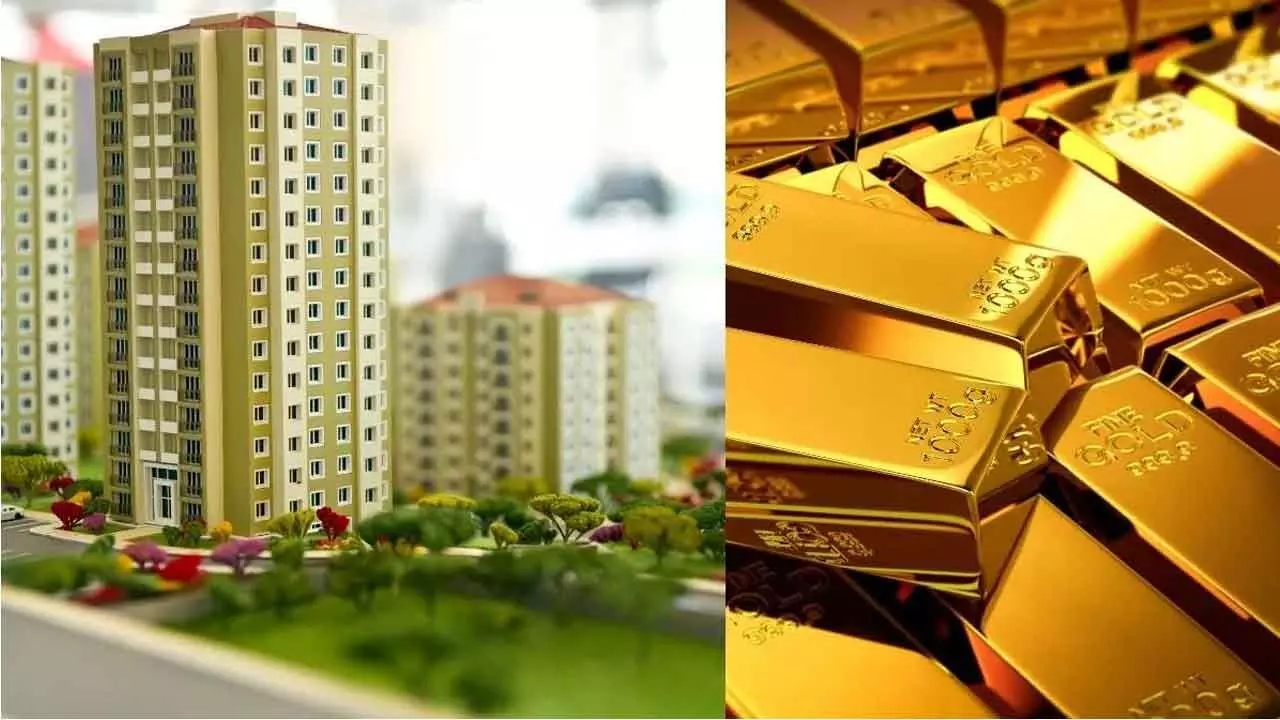As Growth In Wealth Slows Down So Does The Propensity To Spend
The real estate sector value is expected to triple to $1.5 trillion by 2034: New study
As Growth In Wealth Slows Down So Does The Propensity To Spend

As the country’s property sector gears up to contribute 10.5% to GDP by 2034, the message is that investment in bricks and mortar will yield high returns, now and in the future
India minted a new billionaire every five days in the last one year and took the total count of US dollar billionaires to cross the triple-century mark for the first time, as per the 2024 Hurun India Rich List. It showed that India now has 334 billionaires, up by 75 over last year.
The Hurun India report mentioned that 1,539 individuals in India have a wealth of at least Rs. 1,000 crore. If Rs. 5,000 crore is taken as the threshold, the rich list has 534 HNIs. The cumulative wealth of India's richest rose 46 per cent, while the average wealth increased by 25 per cent.
So the big question is where will the rich put their money and will the middle class follow suit. India, with its massive population of over 1.4 billion 143 crore, has a much smaller group of people who actively spend on non-essential goods and services, according to a report by Blume Ventures. Only about 13-14 crore people form the country’s "consuming class," meaning that they have enough disposable income to buy beyond basic needs.
If luxury car sales are taken as a proxy for the 0verall luxury market, the stagnating sales could be a warning signal for a booming sector. Economic uncertainties and stock market volatility have weighed on consumer sentiment and could be growth drags for luxury car sales growth.
“The stock market and real estate prices are one of the key drivers for the luxury car segment. Both have seen a lot of uncertainty in the last one year. The real estate sector is expected to triple in value to $1.5 trillion by 2034”, according to a Knight Frank and CII report. At the centre of this whopping rise is urbanisation, and with 42.5 per cent of the population expected to live in cities by 2034, it will require 78 million new homes, a real estate potential for seasoned investors.
Gold and real estate have long been the cornerstones of traditional Indian investment. While gold has always been the go-to option for liquidity, safety, and cultural significance, real estate offers a tangible, long-term asset with the potential for wealth creation through appreciation and rental income. Both assets serve different financial goals where gold is easy to buy, sell, and store, while on the other side real estate provides stability, leverage, and consistent returns.
The luxury (retail) market in India is pegged at $8 billion and is expected to expand to $14 billion by 2032, growing at a CAGR of seven per cent, as per analysts at BCG.
RBI data shows real estate delivers 8–10 per cent annual appreciation, eclipsing gold’s 6–7 per cent and stock market unpredictability. Post-pandemic, the sector’s 15 per cent CAGR highlights its resilience, driven by infrastructure projects like the Delhi-Mumbai Industrial Corridor and tech-driven transparency in Tier 2–3 cities.
Real estate’s dual returns—appreciation and rental yield—create a unique value proposition. Banks finance up to 80 per cent of property costs, enabling investors to amplify gains with minimal upfront capital. Leverage turns a home loan into a wealth escalator. Rentals can repay EMIs within years, while tax deductions on interest and capital gains boost net returns. A second home isn’t a liability; it’s a passive income stream.
While gold retains cultural significance, real estate’s blend of stability, policy support, and growth potential makes it indispensable for long-term wealth. As the country’s property sector gears up to contribute 10.5 per cent to GDP by 2034, the message is clear that investment in bricks and mortar is going to yield high returns, now and in the future.
India is on track to become the third-largest consumer market in 2026, overtaking Germany and Japan, as people in the affluent category increase, investment bank UBS said in a report last year.
“As of 2023, there were an estimated 40 million people in India (four per cent share in the population of 15 years and above) in the affluent category (annual income above $10,000), and these will likely more than double in the next five years,” UBS said, projecting a figure of 88 million people with over $10,000 annual income by 2028.
Though both the reports point at a significant increase in India's affluent class that has driven the consumption sharply in recent times with the trend of premiumisation catching on across categories, India's consumption story has lately been broad-based with the emergence of a middle class that has long been a minuscule percentage.
What makes the Indian market particularly attractive for foreign companies is the rise of the rich who have higher purchasing power. As Western economies struggle with growth, ages and consumer spending, India offers a large population of the rich, who will splurge on high-end items.

